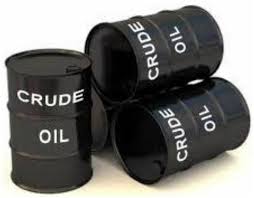The Organization of the Petroleum Exporting Countries (OPEC) and its allies continue to underperform their increasingly lofty oil production targets, with the group falling a record 700,000 barrels per day short of its collective quotas in January, according to the latest S&P Global Platts survey.
OPEC’s 13 countries raised output by 150,000 bpd from December, pumping 28.19 million bpd of crude, while the nine non-OPEC partners, led by Russia, only managed to add a meager 10,000 bpd, producing 13.99 million bpd, the survey found.
In all, 14 out of the 18 members with quotas underproduced their targets, pushing OPEC+ compliance to 120.8 per cent, the highest since the group instituted record output cuts in spring 2020 to pull the oil market out of its pandemic crash, according to Platts calculations.
Nigeria, plagued by numerous operational and technical problems over the past year, is one such example, posting the largest increase among OPEC+ members in January to hit a nine-month high, according to the Platts survey.
The country pumped 1.57 million bpd, up by 190,000 bpd from December, aided by a recovery in key export grade Forcados. Even so, it was well under its quota of 1.683 million bpd.
Despite strong gains from the group’s core Gulf members and Russia, along with a resurgent Nigeria, disruptions in several OPEC+ countries, including Venezuela, Kazakhstan, Libya and Iraq, limited the bloc’s growth.
The coalition’s struggles to keep pace with its monthly 400,000 bpd quota hikes have drawn a chorus of criticism from its key crude customers, including the US and India, who say the group should tap its shrinking spare production capacity to bring oil prices down from recent seven-year highs.
However, OPEC+ officials, who are next scheduled to meet March 2 to determine April output targets, say prices have overshot levels that current market fundamentals would indicate, driven by rising geopolitical risks in the Ukraine and elsewhere.
And they say that many underperforming countries face only temporary setbacks that can quickly be reversed.
OPEC+ co-leaders Russia and Saudi Arabia both pumped 10.08 million bpd in January, also failing to hit their quotas of 10.122 million bpd.
Platts Analytics estimates about 325,000 b/d of additional upside in Russian output by the end of 2022, which would leave it well short of its final target of 11 million bpd under the OPEC+ agreement.
Russia’s “production growth in 2022 will not keep pace with its quota increases under the current framework deal,” Platts Analytics said in a recent note.
Meanwhile, Saudi Arabia saw its crude exports rise modestly in January, while domestic refining runs appeared to pick up. The kingdom boosted output by 130,000 bpd, the survey found.
Neighboring UAE, which has often chafed at the production restraints imposed by the OPEC+ agreement, slightly exceeded its quota in January, pumping 2.93 million bpd.
Venezuela, which is exempt from a quota under the OPEC+ deal, had a major slowdown, as reduced supplies of diluents dragged down production from its extra heavy oil fields. It produced 630,000 bpd in January, the survey found, down 120,000 bpd.
Imports of Iranian condensate, which it uses to blend its extra-heavy crude, had helped the Latin American country recover its output in recent months. But an expected cargo for January did not arrive, sources said, forcing Venezuela to shut in production.
Another exempt member, Libya, slipped under 1 million bpd for the first time since October 2020 due to issues at its southwestern and eastern oil fields. Production did rebound sharply in the second half of January, but rough weather also resulted in lower exports.
Iraq saw its output also hampered by bad weather and technical issues. Iraq pumped 4.26 million bpd, a fall of 50,000 bpd, the survey found.


